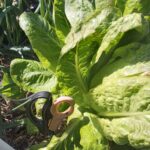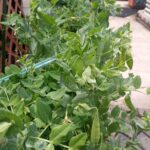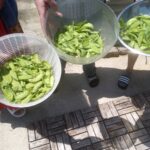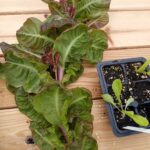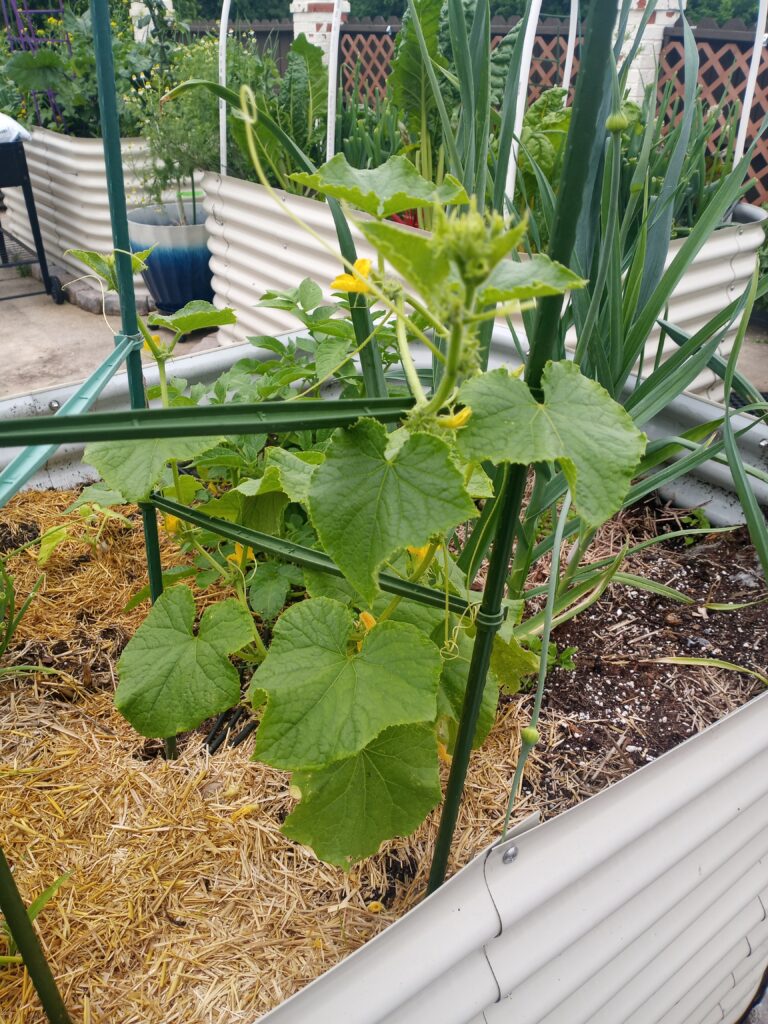
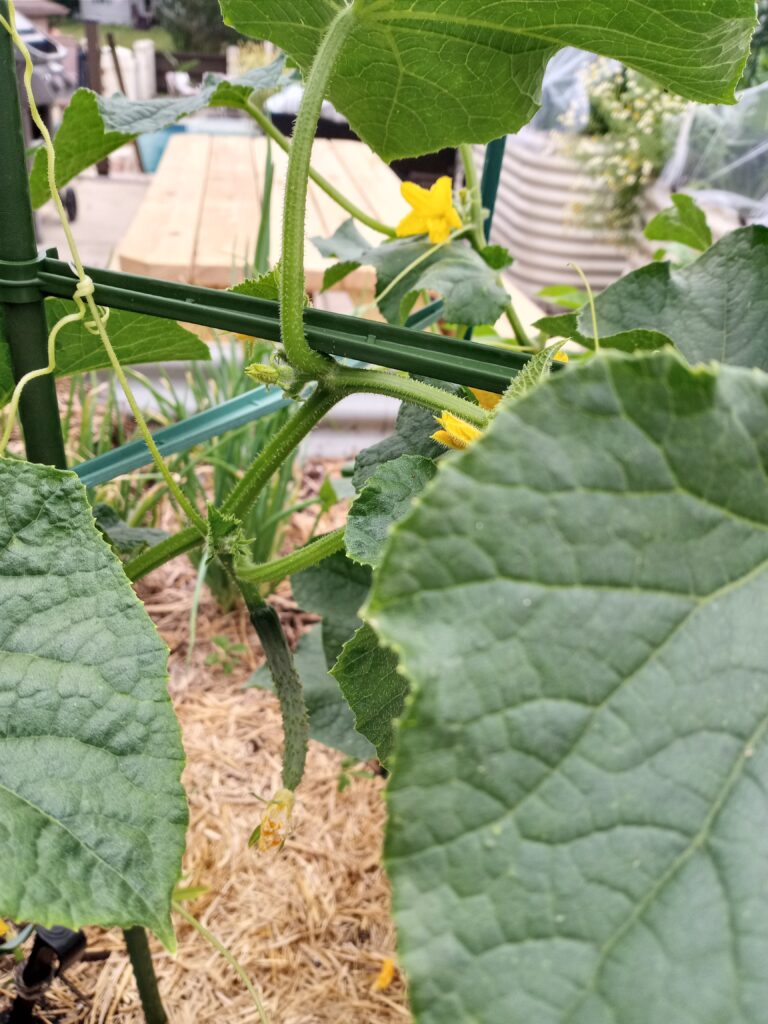
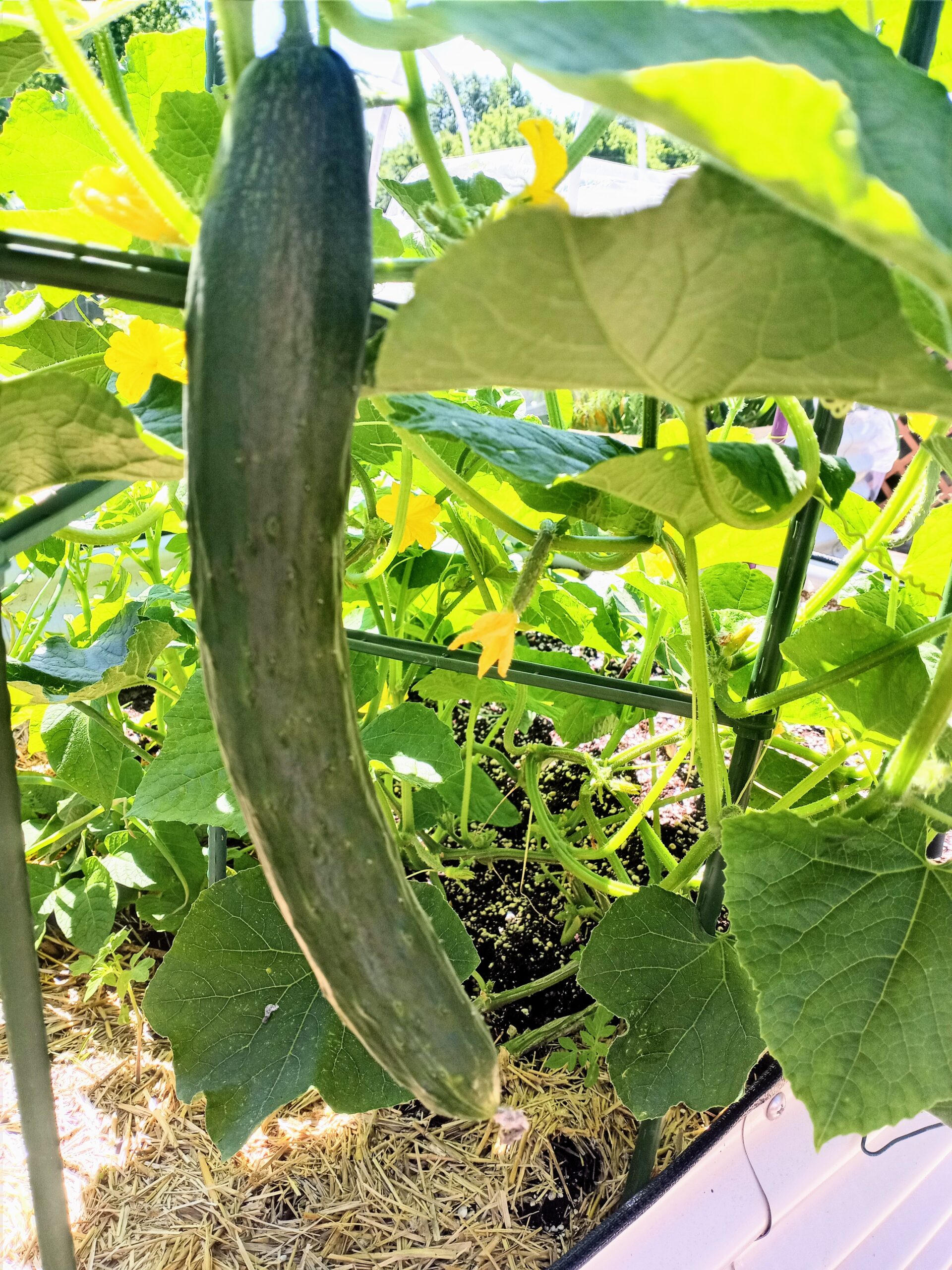
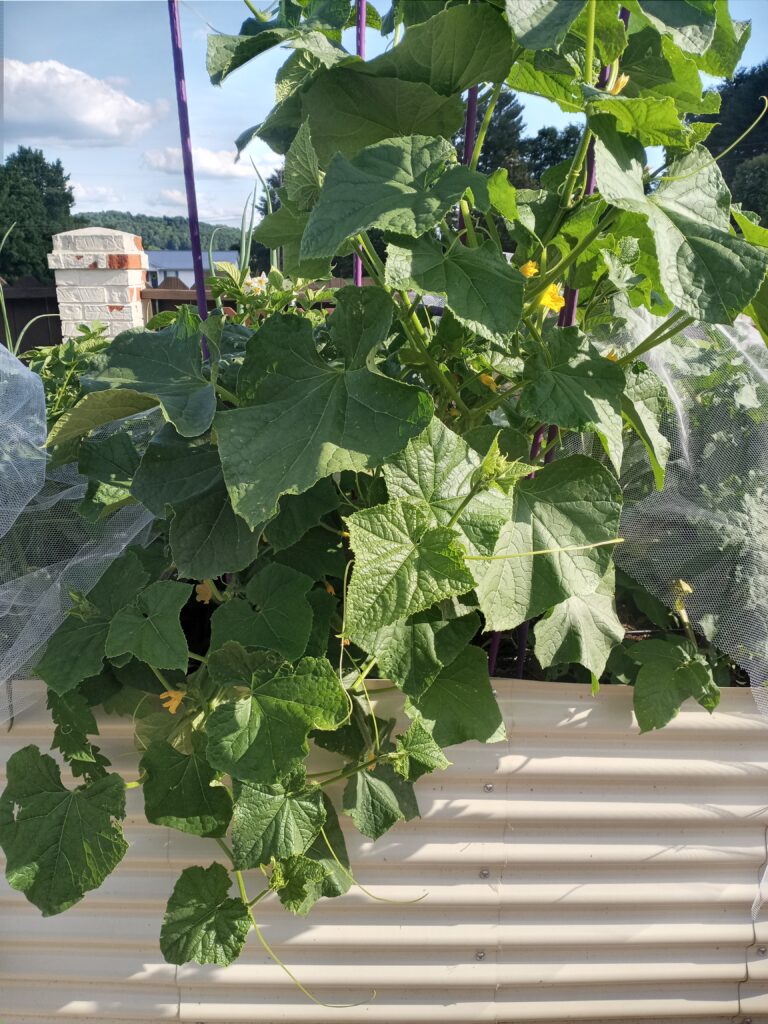
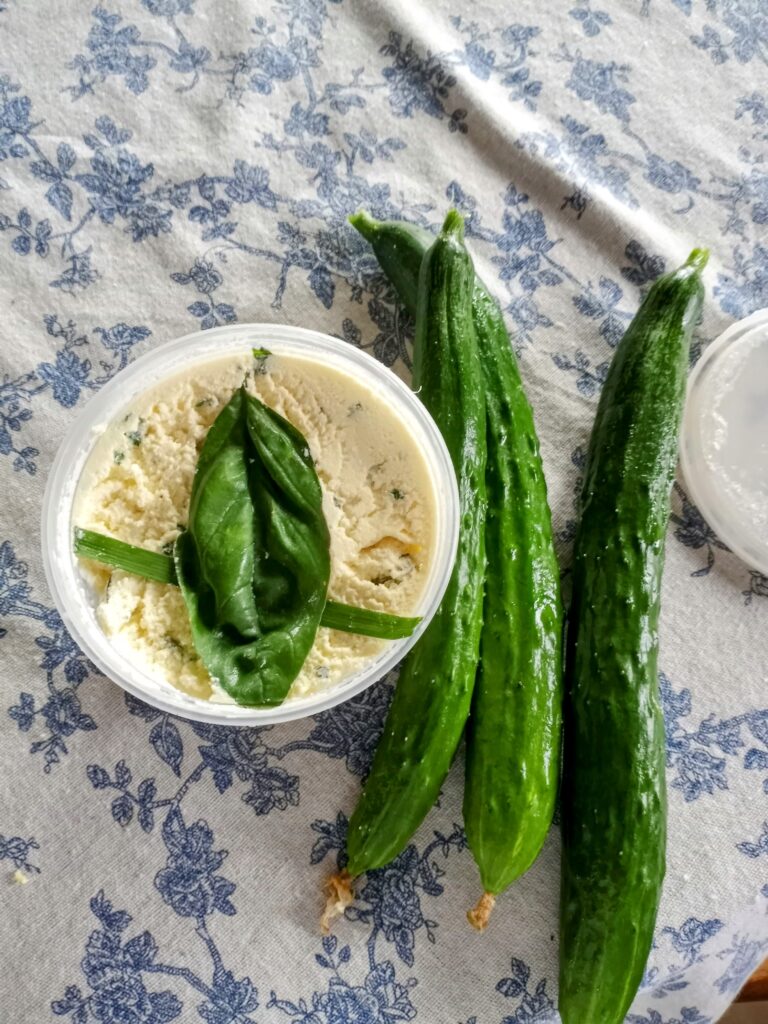

I grow a lot of Japanese Suyo cucumbers. They grow big and fast. They are parthenocarpic – which means they are self-pollinating. Because of this, they are great for the earlier part of the season when the pollinators are still just getting started. Crops with flowers, like cucumbers, generally require all those little bees and flying critters to pollinate and set fruit.
They are also burpless with very few seeds. They grow long and straight with very little prickles. A beautiful cucumber.
We started these indoors in March and transferred out to the greenhouse as we waited for temperatures to rise. I wait until nighttime temperatures are solidly above 50 degrees Fahrenheit.
Caring for these is simple. First, keep the leaves off the soil by pruning them. Soil is a disease highway that is built upon the lower leaves. And in the south, where our weather is humid and warm, disease is the first problem we need to contend with as cucumber gardeners. Diseases like powdery mildew will take down your entire crop over time, so pruning the bottom leaves is critical.
Second, give it a habitat. Grow up! Mine tend to spill over the sides of my raised beds, which I allow, but the real fruiting happens near the tops where they get full sun. I use modular tomato cages I got from Amazon a couple of years ago to trellis, and they have lasted through all sorts of weather and abuse.
Third, keep pruning! Remove leaves on the interior that are not getting sun. Leaves are the solar panels to your plant. If they aren’t getting sun, prune them off to help keep bug and disease pressure down to a minimum.
Fourth. Fertilize. Cucumbers produce a lot of fruit, so they need a good fertilizing routine. Beyond the basics, I use a bloom-booster fish emulsion to encourage new flowers. Flowers = fruit. I do this after heavy rains or a heavy picking. I am not one to use route schedules for fertilizing. I go by feeling and by patterns. And that works for me. But you do you boo.
And finally, pick them! As soon as a cucumber has one over grown fruit, it sends a signal to it to stop producing. Its job is complete: it reproduced. And now it can shut down production. Don’t let it! Examine your plants closely as the fruit likes to hide!
This year, I finally am getting smart by planting successions of cucumbers. Next up, I will plant some pickling cucumbers so I can use up all the dill and stock my pickle shelf in my extra fridge.

